November
2015
|
New Hummingbird Garden at Green Library |
|
Where
is
it? |
It is beside Green Library’s East portal—the one that opens toward the green space where Meyer Library formerly stood. You’ll find it in a secluded area behind the red Shumway Fountain—the one that (when flowing) resembles a half-submerged basketball hoop. It is bound by two high walls (one of which is glass, offering good viewing from within the library) and by two low walls (both offering good viewing from the portal apron).
You’ll notice the low walls when you pass near Coupa Cafe. Behind them you’ll see three liquidambar trees (also called American sweet gum, for their fragrant, although not sweet, resin--a chewing gum ingredient). These three trees--along with two newly planted Eastern redbuds--provide hummer perching sites. Hummers take a mandatory break when their .02-ounce capacity crop, a thin-walled sack that temporarily holds what they swallow, needs draining.
|
|
| |
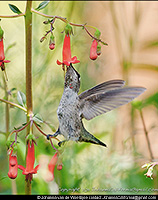 |
|
What
makes
it a
hummingbird
garden? |
Its supply of ample, reliable nectar sources attract hummers. As nectar specialists, hummers lap up nectar at a rate of about 13 flicks per second. Feeding bouts might last up to a minute and occur five-14 times per hour. Bottom line? Hummingbird species consume from one-half to eight times their body weight daily. This may require 1,000 blossom visits. The birds are said to remember the visits and how long the flowers take to refill.
It is likely that campus hummers will find the year-round nectar the new garden provides, but to help lure them over the half-wall, nectar sources are included in a nearby line of planters on the East portal apron. Steve Rottenborn (a wildlife ecologist who has studied birds of the San Francisco Bay area since 1992) expects at least three species of hummingbirds to use the garden. Anna’s Hummingbirds (above) will be the most abundant species, occurring here year-round, while Allen’s Hummingbirds will use these flowers in spring and early summer (possibly breeding nearby) and Rufous Hummingbirds will occur here in early spring and fall.
|
|
| |
Blooming schedule: |
|
What's
in
bloom
now?
|
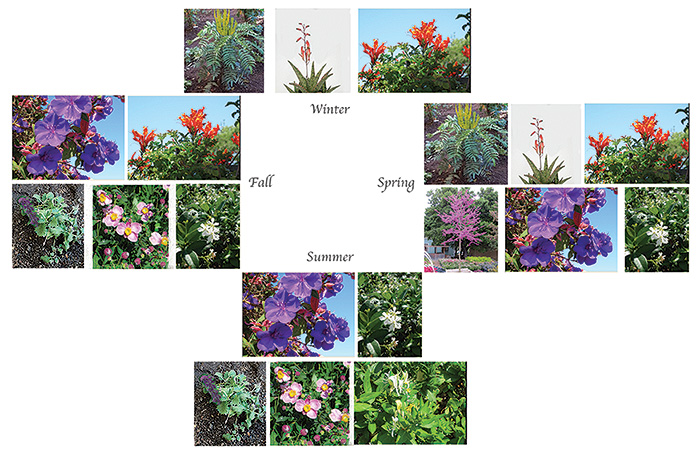 |
|
| |
|
|
How did
the garden
come about? |
Kudos to Cathy Blake for adding this garden to her long list of responsibilities as University Landscape Architect and thanks to Stanford horticulturalist Julie Day, Stanford arborist Michael Burdzinski and other Grounds team members for their dedication. Kudos and thanks especially to Ted Tucholski, Director of Grounds Services who led the sixteen-month effort. As you see, Ted and his resolute team worked wonders: |
|
| |

Just before planting
|

During planting |

Detail |
|
What is its
connection
to the
Art at Exits
Installation?
|
Haydi Boething Danielson (whose nursery grew most of the gorgeous plants), President emeritus Donald Kennedy and I witnessed the effort and coordination required to turn the idea of a garden into this fantastic hummingbird resource. The idea began with the placement of John James Audubon’s print of Anna’s Hummingbirds in Green Library. Prof. Kennedy and I helped bring the Audubon print to Green Library and Haydi Boething Danielson brought a wealth of plant information to the table. (Many of you will be familiar with the annual Boething Lecture, sponsored by the Center for Conservation Biology and Woods Institute. It is held in honor of Haydi’s parents, John and Susan Boething, and addresses forests and the human predicament.)
The Anna’s Hummingbird print hangs on the library’s first floor, near the previously mentioned glass wall overlooking the new garden. The display includes a Science Art caption (brief explanatory text presenting a science lens) so viewers can read about campus hummers and consider issues about their sustainability and then (hopefully!) watch them through the window. It is part of the Art at Exits: Seeing Stanford Species project that has--so far--placed an Audubon bird print near the exits of nine campus buildings that open toward areas the portrayed bird may be seen. The project has been supported, in part, by the Stanford Arts Institute and the Bill Lane Center for the American West, with digital images provided by the National Audubon Society and prints, custom frames and installation provided by VKK Signmakers, Inc. It will grow to include more buildings and more species, if more funding appears. At Green Library, University Librarian Michael Keller, Associate University Librarian and Chief of Staff Mimi Calter, Chief Facilities Officer Edgar Maxion, and Facilities Coordinator Raina Phillips all had a hand in bringing the hummer print to the wall and therefore indirectly in bringing the new hummer garden, and its hummers, within view.
|
|
Have
hummingbirds
been studied
at
Stanford?
|
Think drones. Mechanical engineering students working on flight dynamics with Assistant Professor David Lentink have found that hummer wings have an edge over micro-helicopter blades when generating lift. This is important when designing quadcopters (unmanned helicopters with four rotors) that hover or fly slowly in turbulent air. It is also important in design, in general, where it is thought that approximating hummer wings could improve current functionality by 25 percent. What about taking cues from hummer anatomy for generating power for flight? The Lentink team has found that while the muscles of most vertebrates produce about 100 watts/kg, those of hummingbirds produce 130, so there’s another hummer attribute from which to draw inspiration. It is likely that more than a few avid birders would point out that the hummer brain is more than four percent of its body weight—the largest proportion among birds. (It’s not a fair comparison, but if you wondered, it is apparently two percent in Homo sapiens.)
So, also think biology. Stanford biologist Professor Paul Ehrlich, who developed the Biology of Birds course here in the late 1980s and taught it for decades, is a champion of the garden, noting that it is “another effort trying to make the Stanford University campus bird and birder friendly”.
For more information on hummers, campus birds and bird art see birds.stanford.edu, which provides links to the Art at Exits and the Birds of Stanford websites. For more information on hummingbird foraging, see: http://www.hummingbirds.net/hainsworth.html
If you see noteworthy hummer behavior or have questions, please let us know.
darrylw@stanford.edu
|
|
| |
|
| The Plant List |
|
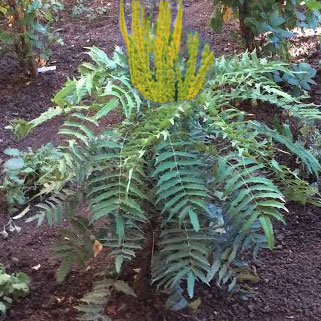
|
In winter through spring, Mahonia lomariifolia (Chinese holly) will bloom. These fernlike evergreen shrubs with spiny sprays that whorl around a central stalk will tolerate partial shade. They produce upright yellow flower clusters and blue berries.
|
|
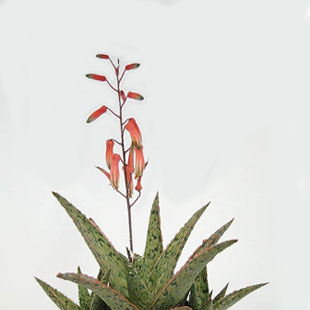
|
In winter through spring, a hybrid Aloe (pink blush aloe) will bloom. These small, fleshy-leafed succulents produce long stems that bear a red flower cluster. They are planted in the swales and will tolerate light shade.
|
|
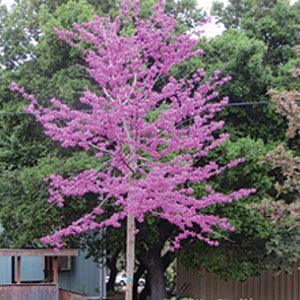 |
In spring, two Cercis canadensis (Eastern redbud) will bloom. These trees produce small pink flowers along their branches and trunk before leafing out.
|
|
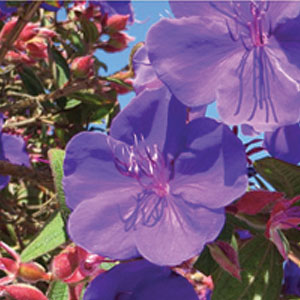
|
In spring through fall, seven Tibouchina urvilleana (princess flower) will bloom. These sprawling evergreen shrubs produce five-petaled purple flowers. To see one up close, check out the planters leading to the East portal.
|
|
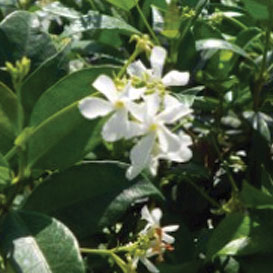
|
In spring through fall, 10 Trachelospermum jasminoides (star jasmine) will bloom. This shrubby, vine-like ground cover will tolerate partial shade and, although not known as good nectar source, produces white flowers. The plants just beyond the perimeter of the hummer garden are star jasmine.
|
|
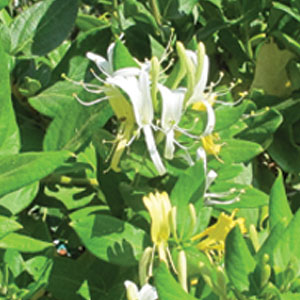
|
In summer, 35 Lonicera japonica 'Halliana' (Japanese honeysuckle) will bloom. These shrubby semi-evergreen vines require only occasional water and tolerate partial shade. White tubular flowers turn yellow and are followed by glossy berries. Under some conditions, this exotic can become invasive.
|
|
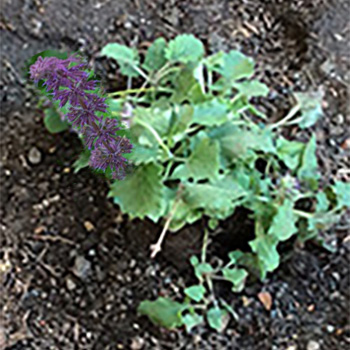
|
In Summer through fall, Salvia verticillata ‘Purple Rain’ (whorled sage) will bloom. These drought-tolerant members of the sage family will tolerate partial shade. They produce spikes of purple flowers that may bloom through fall, if deadheaded.
|
|
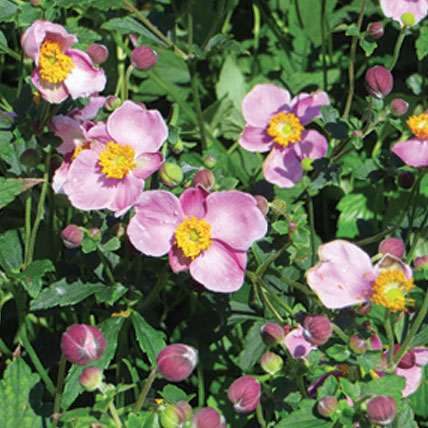
|
In summer through fall, 40 Anemone japonica x A. hybrida pink (pink Japanese anemone) will bloom. It will be interesting to see if hummers favor these flowers as nectar sources. It will also be interesting to see if the birds collect the soft fibers of their seedpods for nesting material.
|
|
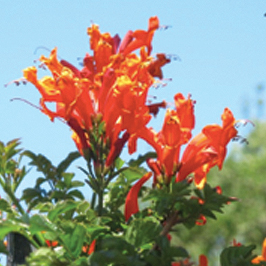
|
In fall through spring, 40 Tecomaria capensis ‘Tecoma’ (Cape honeysuckle) will bloom. These scrambling evergreen shrubs will tolerate partial shade and produce orange tubular flowers.
|
|
| |
|
|
Photo Credits: |
Juvenile Anna’s Hummingbird ©2011 Johanna van de Woestijne contact JohannaCalifornia@gmail.com
Plant images primarily courtesy of Boething Treeland. See: http://www.boethingtreeland.com |
|
|













